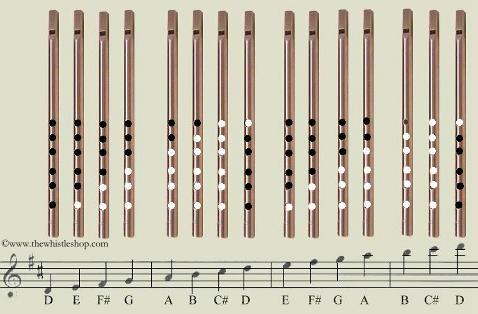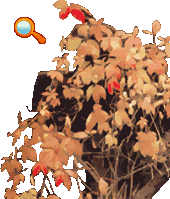What is actually a whistle (pistalka)?
Whistle (pistalka)
is an end blown fipple flute about one feet in length with six fingering holes bored along the side held upwards.
Are whistles (pistalka) available in Slovakia only?
Whistle is very common in many cultures all around the globe. Perhaps the most known 6 hole whistle today is Irish tin whistle. Basically, there is no difference between Irish tin whistle and Slovak pistalka except the material used: Slovak pistalka is on contrary to Irish tin whistle purely hand made from natural piece of upland wood.
What is the difference between pistalka, irish whistle, tin whistle or penny whistle?
"Slovak pistalka" is basically the same as irish whistle. Pistalka as well as Irish whistle is endblown fipple flute with 6 side fingering holes. The only difference is in the material and technology used. Whereas Irish whistle is mass produced from tin, Slovak pistalka is hand made from upland wood (Elder tree - Sambucus Nigra).
"Tin whistle" is another name for Irish whistle indicating that it is made of tin.
"Penny whistle" is another name for very popular "D whistle".
"Low D whistle" is one octave lower in tuning and 2 times longer as the penny whistle.
How is the whistle (pistalka) made ?
Slovak whistles are made of natural piece of upland elder tree about one to two feet in lenght. The maker bores out the inside to the proper diameter and then plugs the top end and creates the airway and edge for tone production creating thus a fipple sound device . The bore is cylindrical. The finger holes are measured and cut, and intricate carving or coloring may be added to individualize the instrument.
How is the whistle (pistalka) played ?
The player blows through the fipple on the top end and covers the finger holes with the first three fingers of each hand. The melody is played out on by fingering the whistle's holes.
How to hold the whistle ?
Left hand at top, operating first three holes, right hand at bottom, managing bottom three holes. Don’t attempt to cover holes with the fingertips, but rather use the ‘pads’ of the first joint of each finger.
What are the whistle (pistalka) keys and lenghts ?
Whistle key is corresponding with its lenght, longer means lower.
Key - lenght in cm (inches)
- D - 58 cm (23") - low D whistle
- E - 54 cm (21")
- F - 48 cm (19")
- G - 43 cm (17")
- A - 39 cm (15")
- H - 35 cm (14")
- C - 32 cm (13")
- D - 28 cm (11") -
D whistle, (in Ireland called "penny whistle")
What is the whistle (pistalka) scale ?
The whistle is a diatonic instrument, meaning that it's designed to serve up seven-note 'diatonic' scales (rather than chromatic scales that include all of the notes within an octave).
To generalize, each whistle can be played easily in several key / mode combinations, the most useful / playable being:
- 1 major,
- 1 mixolydian,
- 2 Aeolian (minor),
- 2 Dorian (minor),
- 4 major,
- 5 Dorian (minor),
- 6 Aeolian (minor).
|
 |
The numbering here refers to the ‘native’ key / scale of the instrument. On a D whistle, for example, 4 major is the scale of G major, since G is the 4th ‘scale degree’ of the scale of D (d e f# g...).
The most reasonable keys for the D whistle: |
| D Ionian (major) (1) |
|
| 1 |
2 |
3 |
4 |
5 |
6 |
7 |
8 |
| d |
e |
f# |
g |
a |
b |
c# |
d |
|
|
D Mixolydian (1) – like the major scale,
but with flatted 7 |
E Dorian (2m) - like natural minor,
but with natural 6 |
| 1 |
2 |
3 |
4 |
5 |
6 |
b7 |
8 |
| d |
e |
f# |
g |
a |
b |
c |
d |
|
| 1 |
2 |
b3 |
4 |
5 |
6 |
b7 |
8 |
| e |
f# |
g |
a |
b |
c# |
d |
e |
|
| G Ionian (major) (4) |
A Dorian (5m) |
| 1 |
2 |
3 |
4 |
5 |
6 |
7 |
8 |
| g |
a |
b |
c |
d |
e |
f# |
g |
|
| 1 |
2 |
b3 |
4 |
5 |
6 |
b7 |
8 |
| a |
b |
c |
d |
e |
f# |
g |
a |
|
E Aeolian (natural minor) (2m)
- flatted 3, 6 and 7 |
B Aeolian (natural minor) (6m) |
| 1 |
2 |
b3 |
4 |
5 |
b6 |
b7 |
8 |
| e |
f# |
g |
a |
b |
c |
d |
e |
|
| 1 |
2 |
b3 |
4 |
5 |
b6 |
b7 |
8 |
| b |
c# |
d |
e |
f# |
g |
a |
b |
|
The designations (2m), (5m), and (6m) above are an attempt to indicate that the scales are based on the 2nd, 5th and 6th notes, respectively, of the D major scale – the ‘native’ scale for the D whistle. The ‘m’ stands for minor, indicating the minor-like quality of the Aeolian and Dorian modes used for many traditional folk melodies. |




